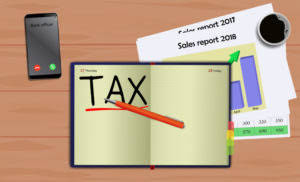
Also, if there are other businesses that may be affected in case of bankruptcy, then this could impact whether any claims would be paid back in full or just partially. The same is true for contingent liabilities such as tax filings and litigation matters. This could mean trouble if something unexpected happens and they need to liquidate their debts. Although beneficial to know, calculating the quick ratio trend over the years gives you more useful additional data to judge a corporation’s health by.

Quick assets are current assets that can presumably be quickly converted to cash at close to their book values. On the other hand, the quick ratio is a more conservative measure of liquidity that focuses only on a company’s most liquid assets. It is calculated by subtracting inventory from current assets, then dividing by current liabilities. The quick ratio communicates how well a company will be able to pay its short-term debts using only the most liquid of assets. The ratio is important because it signals to internal management and external investors whether the company will run out of cash. The quick ratio also holds more value than other liquidity ratios such as the current ratio because it has the most conservative approach on reflecting how a company can raise cash.
What is your current financial priority?
It measures the ability of a company to meet its short-term financial obligations with quick assets. You calculate the quick ratio by adding up all the current assets and dividing them by the current liabilities. It doesn’t consider a company’s long-term liquidity essential for its operations and growth. A company with a low quick ratio may still have sufficient long-term liquidity to support its business. For example, industries with high inventory turnover, such as retail or manufacturing, may have lower quick ratios due to their ability to convert inventory into cash quickly.
Changes in payment terms with suppliers or customers can also affect a company’s quick ratio. For example, if a company extends longer payment terms to customers, it may have lower cash on hand and a lower quick ratio. In that case, it could negotiate extended payment terms with its suppliers, improving its short-term liquidity. By excluding inventory from the calculation, the quick ratio can provide a more accurate picture of a company’s ability to meet its short-term obligations.
What is considered a healthy Quick Ratio?
On the other hand, a low quick ratio may indicate that a company is struggling to meet its short-term obligations, which could lead to financial difficulties and potential insolvency. For one, this ratio does not account for cash flows, which can have a significant impact on a company’s liquidity. If a company had to cover its obligations right away, the cash ratio can give you a sense of how easily it could do so without using anything besides cash and cash equivalents. The company’s quick ratio is 2.5, meaning it has more than enough capital to cover its short-term debts.
The quick ratio measures a company’s ability to pay for its current liabilities with its most liquid, short-term assets. However, financial leverage based on its solvency ratios appears quite high. Debt exceeds equity by more than three times, while two-thirds of assets have been financed by debt. Note as well that close to half of non-current assets consist of intangible assets (such as goodwill and patents). As a result, the ratio of debt to tangible assets—calculated as ($50/$55)—is 0.91, which means that over 90% of tangible assets (plant, equipment, and inventories, etc.) have been financed by borrowing. To summarize, Liquids, Inc. has a comfortable liquidity position, but it has a dangerously high degree of leverage.
When Should You Use the Quick Ratio or the Current Ratio?
If a company experiences declining profits, it may have less cash and a lower quick ratio. Some companies experience fluctuations in their quick ratio due to seasonal changes in their business operations. For example, a retail company may have a higher quick ratio during the holiday shopping season when sales are high but a lower quick ratio during slower months. Raising capital through equity or debt financing may be difficult if a company has a low quick ratio.
- The current ratio will usually be easier to calculate because both the current assets and current liabilities amounts are typically broken out on external financial statements.
- This can be an important part in deciding between companies to invest in, especially if short-term health is one of your primary considerations.
- Investors and lenders may view a low quick ratio as a sign of financial weakness and hesitate to invest in the company.
- In such cases, the quick ratio may provide a more accurate picture of a company’s liquidity than other ratios that include inventory.
- Selling non-essential assets can generate cash for a company and improve its quick ratio.
While profitability ratios focus on generating returns and maximizing profits, liquidity ratios prioritize maintaining sufficient liquidity. A company can have sufficient money on hand to operate if it’s built up capital; however, it may be draining the amount of quick ratio is another commonly used term for the reserves it has if operations aren’t going well. Alternatively, a company may be cash-strapped but just starting out on a successful growth campaign with a positive outlook. Last, liquidity ratios may vary significantly across industries and business models.
Current liabilities
Since the current ratio includes inventory, it will be high for companies that are heavily involved in selling inventory. For example, in the retail industry, a store might stock up on merchandise leading up to the holidays, boosting its current ratio. However, when the season is over, the current ratio would come down substantially. As a result, the current ratio would fluctuate throughout the year for retailers and similar types of companies. As of January 29, 2022, Macy’s had cash and cash equivalents of $1.712 billion, receivables of $297 million, and total current liabilities of $5.416 billion.
- Whether you’re an investor, a creditor, or a company executive, understanding the quick ratio can provide critical insights into a company’s short-term financial health.
- The financial metric does not give any indication about a company’s future cash flow activity.
- A high quick ratio indicates that a company can pay off its current liabilities without relying on selling inventory or less liquid assets.
- While the quick ratio provides a great indicator of a company’s current and past liquidity, it does not provide any insight into the company’s future liquidity.
- This is because inventory and prepaid expenses are less liquid than other assets and may take longer to convert into cash.
- The quick ratio measures a company’s ability to pay for its current liabilities with its most liquid, short-term assets.

